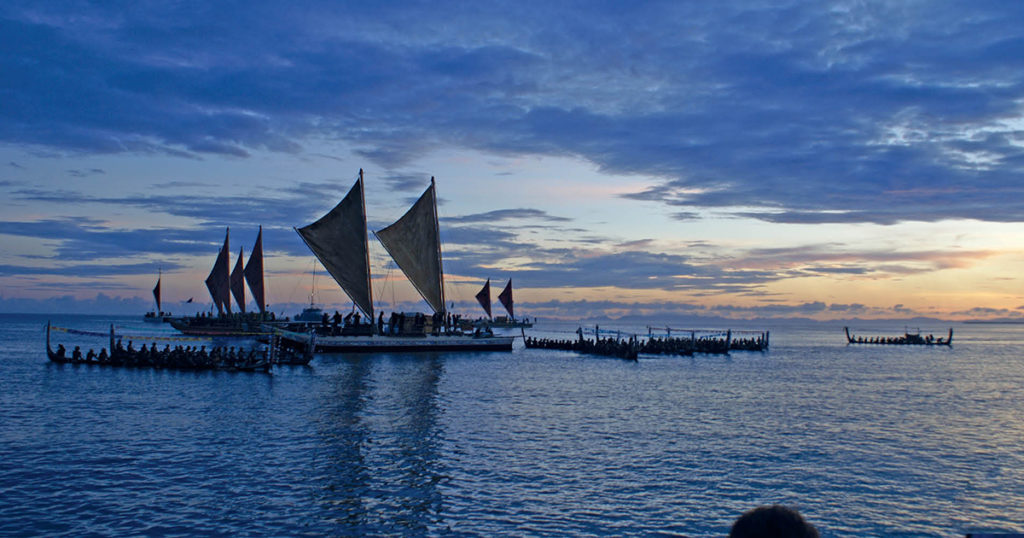The 2018 New Zealand Festival is almost upon us. The Festival is always an exciting time for arts activity in Wellington. This year, the focus is voyages. Artistic Director Shelagh Magadza says, ‘This Festival we celebrate the epic voyages that brought people to this land, before we turn to the future and contemplate the voyages to come’.
The Festival opens this Friday (23 March) with Kupe: A Waka Odyssey, honouring the legendary navigator who lead the first migration across the Pacific, bringing people to Aotearoa New Zealand. This celebration of oceanic voyaging will take place on the Wellington Waterfront. A flotilla of double-hulled, ocean-going waka will sail across the harbour in a grand finale to a months-long journey from Samoa and the Cook Islands. The theatrical extravaganza will feature a mass choir, a thousand-strong haka, and a musical score by Warren Maxwell. It will be amazing.
The Festival also addresses the arrival of Pākehā. In Jane Campion’s 1999 film, The Piano, a Victorian mail-order bride brings her piano with her, across the seas. In colonial New Zealand, this sign of bourgeois civility becomes an impediment. At the end of the film, the woman is escaping with her new lover on a Māori longboat, to which her prized piano has been tied, precariously. She demands it be cut free, cast overboard. It almost takes her with it. For the Festival, the Royal New Zealand Ballet presents the world premiere of a full-length dance version of Campion’s gothic love story. Originally conceived as a short work for Dortmund Ballet, it has been reimagined and expanded as The Piano: The Ballet.
These ideas—the arrivals of Māori and Pākehā, and of waka and piano—come together in a work we’re showing at City Gallery in our show This Is New Zealand, our contribution to the Festival. It’s Michael Parekōwhai’s He Kōrero Pūrākau mō te Awanui o te Motu: Story of a New Zealand River. The Māori artist took a Steinway piano—symbolic of European high culture—and embellished it with Māori carving. Has the Pākehā piano absorbed Māori carving or been absorbed by it—or have they melded harmoniously?
Parekōwhai’s piano is waka-like. As Justin Paton has observed, ‘The curved outer end of the piano case becomes its prow … The lid becomes both a sail and a sky with the holes in the wood becoming stars … All of this puts the musician in the position of the pilot or sailor, sitting aft and pulled along by the genealogical forms that surge around the piano’s case.’
The piano was the centrepiece of Parekōwhai’s show for the 2011 Venice Biennale. Later, back in New Zealand, in Te Papa’s collection, the piano has become a favourite. In Venice, it was played by staff. Since its return, the artist welcomes the public to play it. At City Gallery, people can book in to play the piano, to add their music, their performance, to Parekōwhai’s model of biculturalism. As a fusion of art and performance, elitism and egalitarianism, it feels like the perfect Festival work.
—Elizabeth Caldwell, Director



